WARNING!
Your Computer May be Infected:
1(855)-207-5505
For emergency Tech Support call immediately
Keep in mind that errormessagenumber.com is just one of many websites that may display fake warnings saying that your computer is infected or that your personal and financial information may not be secured. Usually, such websites are not malicious. However, it might be difficult to close them. They are coded so that when you try to close a tab a message pops up to "confirm navigation". If you are using Chrome you can open a Chrome task manager by pressing and holding SHIFT +ESC keys. Then just close the tab that displays 1(855)-207-5505 scam. Or you could fire up the Windows Task Manager and force close your web browser. Both methods should work just fine.
Fraudulent tech support sites promote bogus malware and system scanners. What is more, scammers may install spyware on your computer and a remote control program allowing full access to your computer. Needles to say, you should be very careful and check every phone number or website claiming that your computer is infected or has other serious problems. Very often a simple Google search reveals the truth and unmasks scammers.
If your computer is infected with adware or PUPs that display fake virus warning or tech support scams then you should run a full system scan with recommend anti-malware software. Generally, adware and PUPs arent usually malicious, but watch out because they might well leave you open to attacks from something far nastier. That aside, they're also a pain in the behind! When you're downloading something, read the End User License Agreement carefully and check or uncheck boxes relating to bundled software and you'll be far more likely to remain clear of Zap Tilla and similar threats!
If you have questions, leave a comment down below. I will be more than happy to help you. Good luck and be safe online!
Written by Michael Kaur, http://deletemalware.blogspot.com
1(855)-207-5505 Tech Support Scam Removal Guide:
1. First of all, download anti-malware software and run a full system scan. It will detect and remove this infection from your computer. You may then follow the manual removal instructions below to remove the leftover traces of this malware. Hopefully you won't have to do that.2. Remove 1(855)-207-5505 scam pop-up related programs from your computer using the Add/Remove Programs control panel (Windows XP) or Uninstall a program control panel (Windows 7 and Windows 8).
Go to the Start Menu. Select Control Panel → Add/Remove Programs.
If you are using Windows Vista or Windows 7, select Control Panel → Uninstall a Program.

If you are using Windows 8, simply drag your mouse pointer to the right edge of the screen, select Search from the list and search for "control panel".

Or you can right-click on a bottom left hot corner (formerly known as the Start button) and select Control panel from there.
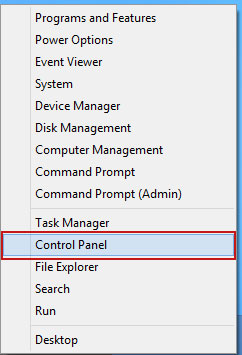
3. When the Add/Remove Programs or the Uninstall a Program screen is displayed, scroll through the list of currently installed programs and remove the following:
- Quiknowledge
- LyricsSay-1
- Websteroids
- BlocckkTheAds
- HD-Plus 3.5
- and any other recently installed application
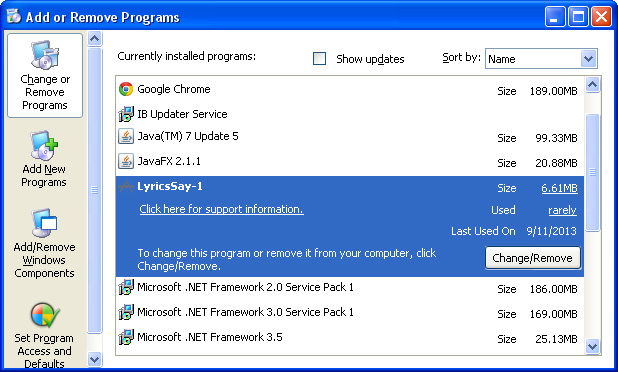
Simply select each application and click Remove. If you are using Windows Vista, Windows 7 or Windows 8, click Uninstall up near the top of that window. When you're done, please close the Control Panel screen.
Remove scam pop-ups from Google Chrome:
1. Click on Chrome menu button. Go to Tools → Extensions.
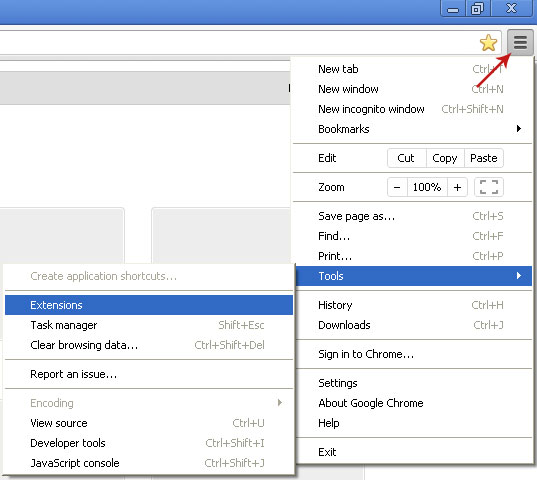
2. Click on the trashcan icon to remove BlocckkTheAds, LyricsSay-1, Websteroids, Quiknowledge, HD-Plus 3.5 and other extensions that you do not recognize.
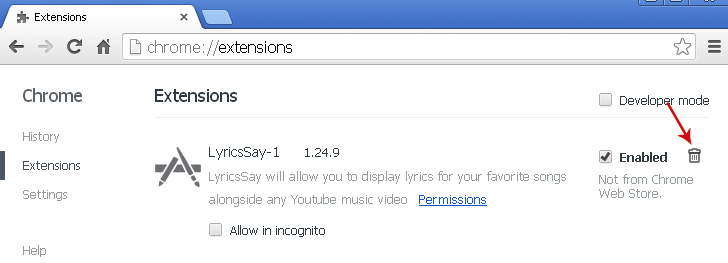
If the removal option is grayed out then read how to remove extensions installed by enterprise policy.

Remove scam pop-ups from Google Chrome:
1. Open Mozilla Firefox. Go to Tools → Add-ons.

2. Select Extensions. Click Remove button to remove BlocckkTheAds, LyricsSay-1, Websteroids, Quiknowledge, HD-Plus 3.5 and other extensions that you do not recognize.
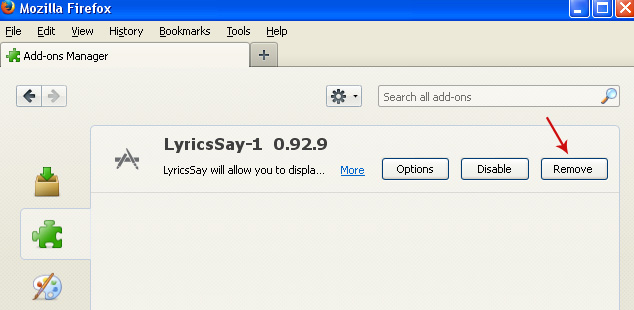
Remove scam pop-ups from Internet Explorer:
1. Open Internet Explorer. Go to Tools → Manage Add-ons. If you have the latest version, simply click on the Settings button.

2. Select Toolbars and Extensions. Click Remove/Disable button to remove the browser add-ons listed above.


Không có nhận xét nào:
Đăng nhận xét